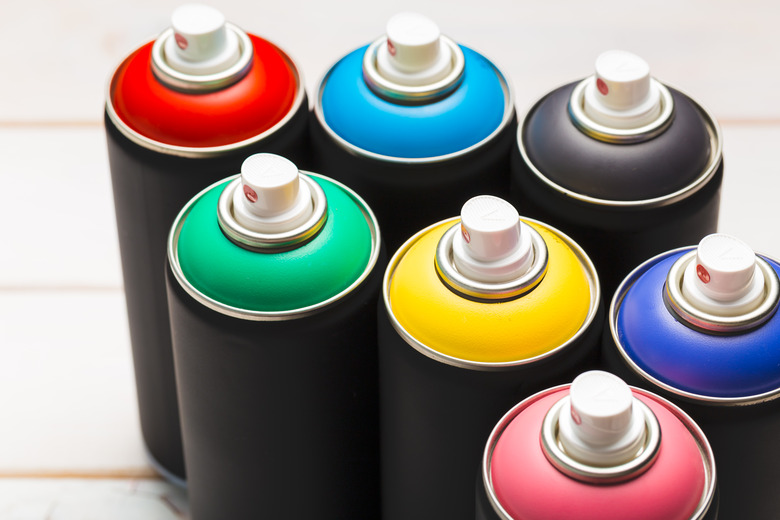How To Paint A Matte Finish On Plastic
Getting a matte finish when painting plastic is just like achieving the same look on wood, in that the sheen level of the paint itself should be matte. Unlike paints for wood, however, paints specifically formulated for plastic are the best option for painting plastic, and many of these are spray paints. Most spray paints for plastic offer a somewhat shiny finish, but if you shop around a bit, you'll find some that offer a matte or flat look.
Preparing the Plastic
Preparing the Plastic
No matter what you're painting, the finish turns out better if the project piece is clean. Wipe down the plastic with a little soapy water if it's dirty, as may be the case with outdoor plastic chairs. Both old and new plastics benefit from another wipedown with a household degreasing cleaner, vinegar, or rubbing alcohol.
It's harder for paint to adhere to glossy plastics, so if your project piece looks shiny, rub it down gently with a fine-grit sanding sponge, which removes some of the glossy finish without damaging the actual plastic. Wipe the piece down again with a damp sponge or paper towel to remove any fine particles clinging to the project piece.
To Prime ... or Not
To Prime ... or Not
Since primer helps paint adhere better, a primer designed for plastic, such as Rust-Oleum Plastic Primer, ensures your paint finish turns out as you'd like. Another benefit is that any paint can be applied atop previously primed plastic; in other words, you won't need a plastic-specific paint if you've applied a plastic-specific primer. Far more paint color and sheen options are available in general-purpose paints, so you're likely to find a matte paint in the color you want if you're not limited to plastic paints.
If you've already purchased a matte spray paint suitable for plastic, read the instructions listed on the label. With their special formulations, some such as Krylon Fusion All-in-One, don't require an application of primer. If your plastic project piece is fairly new or doesn't have any cleaning issues such as tree sap or grease, it's fine to skip the primer if the paint label doesn't suggest one.
Spraying Primer or Paint
Spraying Primer or Paint
Set the plastic project atop a tarp or scrap cardboard outside, or at least in a well-ventilated area such as a garage with the door open. Work on a non-windy, moderately warm day to ensure decent priming or painting results, and make sure there's nothing nearby that may be damaged by overspray. It's a good idea to wear rubber gloves if you don't want paint to get on your hands, either. Shake the primer or paint spray can, then hold it 12" to 18" away from the project, spraying in straight sweeps vertically or across the project.
Start and finish each spray burst before the actual project piece, as this method ensures a smooth finish. Each row or column of spray should overlap slightly, and each spray should go on with your arm slowly moving to avoid drips and blobs. Wait for one coat to dry to apply another, as needed. To keep the spray finish matte, avoid applying glossy clear-coat products atop a piece, as they'll make the paint appear glossy.
